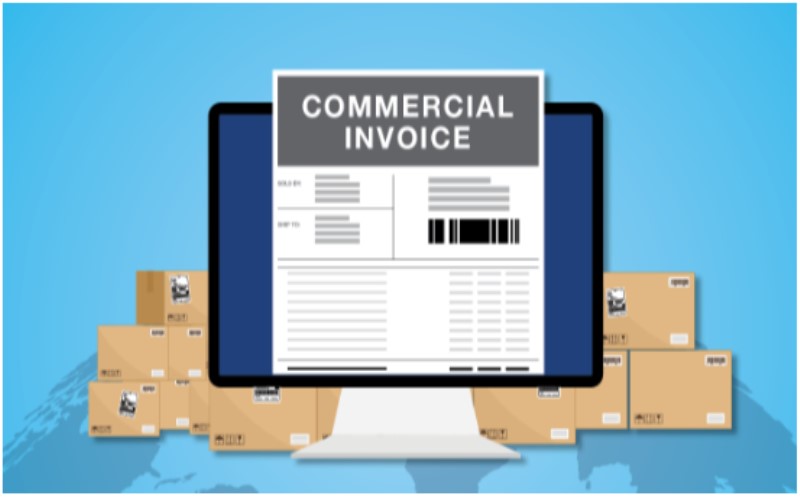Getting a commercial invoice is your ticket to get your business overseas. This invoice is a legal document to take business for international trade and process the agreements. Here is the guide to obtain this document and move one step ahead for getting to export.
Understand Export Regulations
Every country has a different type of export regulation. The documentation and the process of creating it may differ from country to country and where they are exporting to. It is imperative to understand the export regulations of the country and make sure that the country follows a set pattern. Every specific country may have their requirements while filling out the form. So, make sure to understand this respectively and begin with the commercial invoice.
Gather Information
The following important stage is to collect all the necessary information regarding filling out the invoice. The core details about the export transactions include
- The company’s and the buyer’s complete name and address.
- Complete description of the goods, quantity, unit price, and complete value of the products. This helps to know the complete details of the product to be exported.
- The terms of sale and payment method of the product.
- The details of the shipment, including the reference and order numbers.
- The specific packaging and labelling requirements.
Invoice Format
The commercial invoice template has certain standard invoice formats to adhere to international regulations. For this, many countries even provide templates and guidelines for accepting commercial invoices. So, when exporting to a certain country, ensure that the invoice contains all the necessary information required by the respective country. Accordingly, create the invoice that carries all the information the country seeks.
Include Incoterms
The international commercial terms define the responsibilities adhered to by the buyer and the seller. As an exporter, you must specify the International Commercial Terms (Incoterms) that clearly describe the responsibilities and the risks to be faced by the buyers and the sellers in the meantime. The standard incoterm details include EFX, FOB, CIF, etc. The commercial invoice states this given information.
Value Declaration
This section of the invoice must declare the value of the goods to be exported. The details particularly include the taxes, duties, currency and the other transactions conducted while preparing the products and during the process of export.
Comply with Export Regulations
The country for export may have different commercial invoice rules. Looking at the rules of the given country, the commercial invoice may include the export regulations, including the export licenses, export control classifications and several other documentation requirements. Fill details with respect to the same and complete the documentation process as asked by the other country.
Currency and Payment Details
Exporting overseas means you do not only have to think about the value of the product but also about the currency in which the payment will be made. So, mention the currency to continue the process of payment and the necessary payment terms. Do not forget to mention the bank details and the other necessary information for export.
Other Supporting Documents
Visit the guidelines of the commercial invoice and add all the necessary documents with the same. Some of the common documents to address are the packing list, bill of lading, certificate of origin, permits for the importing country, etc. Attach the documents as asked by the latter company and as prescribed by the country.
Review and Verify
It is a long way to go, and a small error can break the road again! So, double-check the information on the commercial invoice for accuracy and completeness. Any mistake in the mentioned information or any missing information can hinder the export process, leading to a delay or problems in export.
Sign and Date
Check the date and sign on the invoice, making sure that all the formalities are completed by the authorised representative of the company.
Distribution
It is crucial to distribute the necessary documents to the parties involved in the export. This acts as evidence and supports any legal documentation to be conducted by the relevant parties. The parties included in the distribution channels include the buyer, freight forwarders or any other customs authorities in the role.
Keep Records
Keep records of the necessary commercial information or any other related export documentation. These records are helpful for both short-term and long-term.
What Are The Contents Recorded In Commercial Invoice?
These are the basic contents you will find in the commercial invoice.
Seller
This includes the basic information regarding the address of the principal party for selling or exporting.
Sold to
Details concerning the name and address of the person/company to whom the product will be imported for the designated use.
Invoice number
The invoice number of the product as assigned by the exporter.
Custom reference number
The details about the overseas customs and reference number as provided during clearance.
Terms of sale
The terms of the sale agreement may differ between the company and the regulations of the country. Considering this, mention the delivery terms and sale agreement clearly.
Currency
Currency terms need to be agreed upon while discussing the payment process between the importer and the exporter.
Description
Complete details of the goods shipped, type of container, gross weight per container, quantity, and unit of measure of the merchandise.
Miscellaneous charges
Details of any miscellaneous charges to be paid by the customer, like export transportation, insurance, etc.
Certifications
Any possible certifications to the shipper for the information to be recorded in the commercial invoice.
Total commercial value
Complete value of the invoice at last. As easy as it sounds, the commercial invoice can help get to export. But, what if there is a better idea to avoid N number of documentation and make the process easy? For this, register online on the Amazon Global Selling platform. This platform ties the business up to the export market with minimum documentation. This can make the process of import and export real, reliable, and easy.

